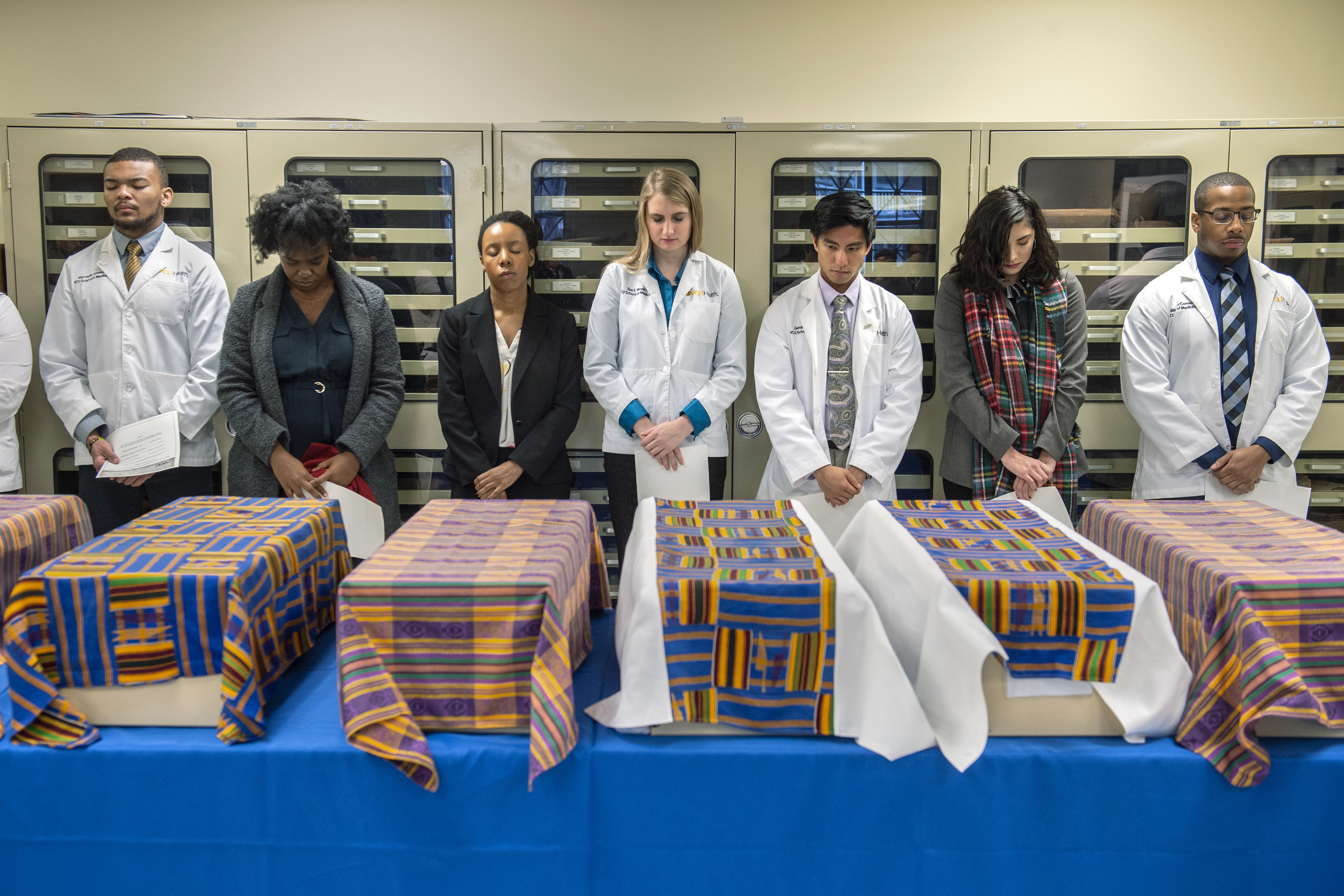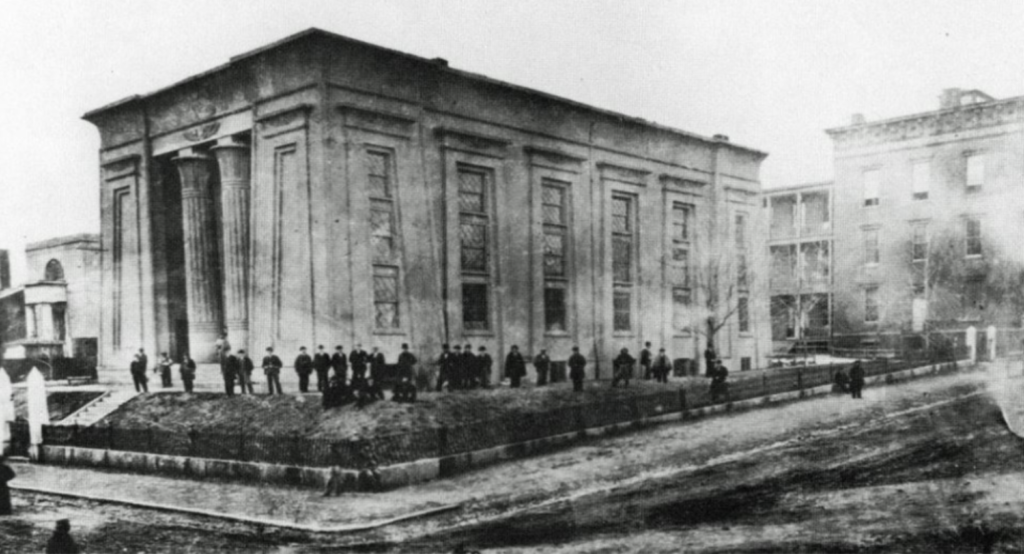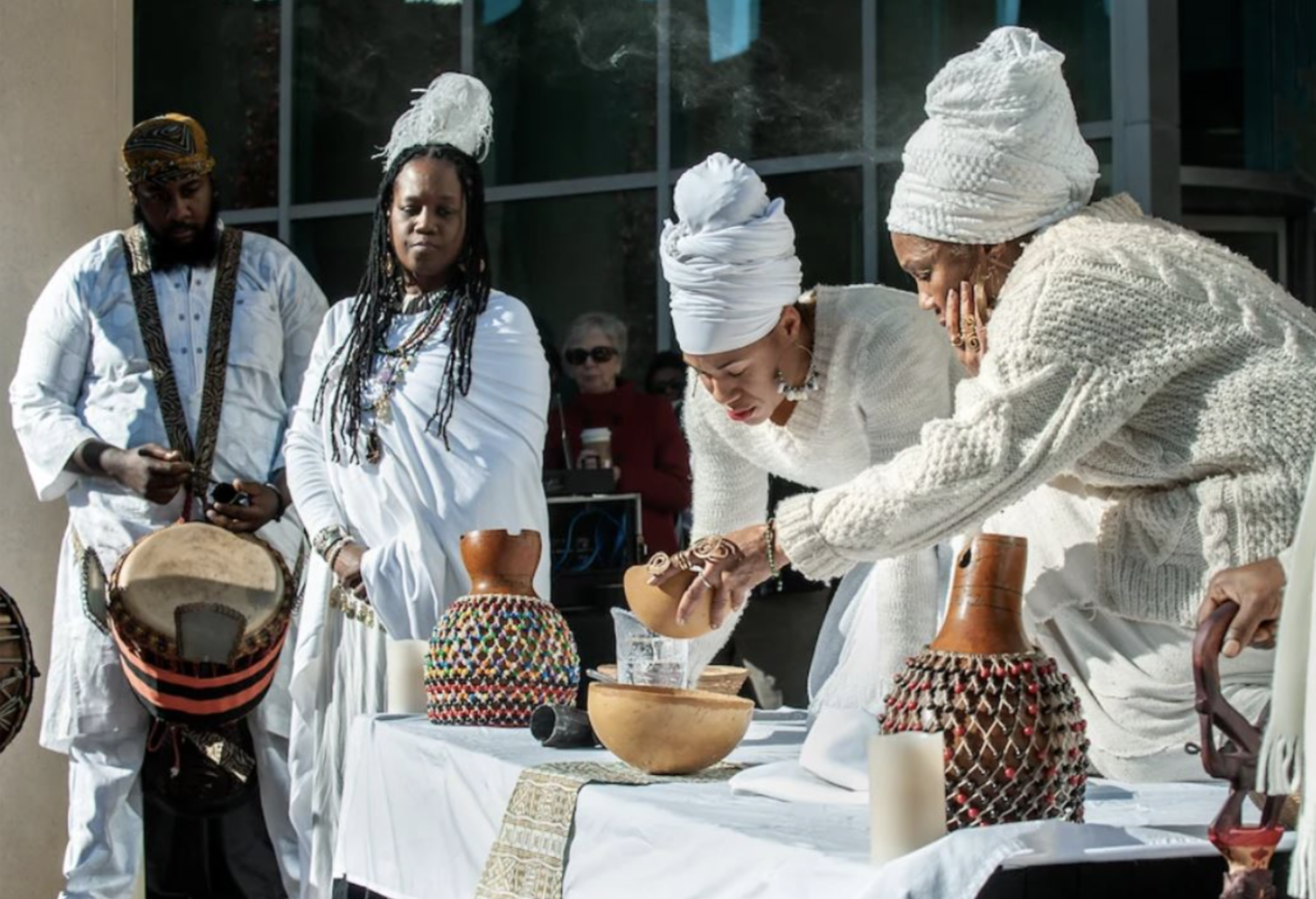Medical Dissection and the East Marshall Street Well
In April 1994, human bones and artifacts from the 19th century were discovered in an abandoned well uncovered during construction of the Kontos Building on Virginia Commonwealth University’s MCV Campus. The well’s contents are believed to have been discarded in the 1800s by medical staff. Although covered by the media in 1994, the discovery remained largely unaddressed by the university until awareness of the well’s history was included in Dr. Shawn Utsey’s 2011 documentary, “Until the Well Runs Dry.” This documentary (linked below) examined the issue of grave robbing and use of black cadavers in medical education during the 19th century. Since that time, VCU has committed itself to moving forward in a manner reflecting the dignity that should be accorded these individuals and has created the East Marshall Street Well Project (linked below) to facilitate a process with the community that ensures the remains receive appropriate study, memorialization and reburial.
This module examines the role of grave robbing and the use of black cadavers in medical education at MCV during the 19th century. The module also provides information about the East Marshall Street Well Project, including the 2019 memorialization ceremony.
This module was adapted from Rader, K (2021). SCTS 200: Science in Society. Undergraduate course, Virginia Commonwealth University and has been reviewed and approved by the EMSW Project Family Representative Council.

VCU Health Sciences students bow their heads in front of the ancestral remains of individuals recovered from the East Marshall Street Well during a prayer given by Del. Delores McQuinn. Nov. 25, 2019.
Learning objectives
- Discuss the history of grave robbing and the use of black cadavers in 19th-century medical education at MCV.
- Describe the relevance and importance of VCU’s East Marshall Street Well Project and VCU Health's understanding of structural racism.
- Explain the ways in which structural racism has played a role in health disparities in Richmond.
- Identify ways in which VCU Health team members will intend to incorporate awareness of structural racism into patient care (required only for those pursuing CME credits).
NOTE: Users who are pursuing the Unlocking Health Equity badge, credit through the VCU Health System DEI learning requirement, or those who would like to claim continuing education credit must complete and submit the Reflection Activity at the bottom of this page. Please visit VCU Health Continuing Education for more information.
Learning materials
The materials below can be reviewed in less than an hour, and users are encouraged to review the materials in the order they are presented.
The History of Medical Dissection
This lecture by Jodi Koste, Archivist and HeadSpecial Collection at VCU Health Sciences Library, describes the history of medical dissectionand medical school training. The practice of disinterring cadavers (i.e., grave robbing or bodysnatching) by Resurrectionists is described with specific reference to its role in the history of the Medical College of Virginia.
[NOTE: Watch the video from 15:22 to 43:40].

Finished in 1845, the Egyptian Building served as the first medical education building for MCV and included adissecting room.
Required Resources
We ask that you spend the hour reading and viewing the resources above and viewing as many of the linked resources below as possible prior to completing the reflection activity. Reflections will be evaluated, and individuals may be asked to resubmit if answers are incomplete or do not meet the length requirement.
Until the Well Runs Dry : Medicine and the Exploitation of Black Bodies: (59 min. documentary by Shawn O Utsey; Iman Shabazz; Burn Baby Burn Production; 2011, Virginia Commonwealth University, Department of African American Studies)
This documentary explores the practice of grave robbing for purposes of medical dissection that was widespread in the 19th and early 20th centuries in the United States. During the 1800's, Richmond, Virginia was a bustling market for the domestic trade in enslaved Africans, and as a consequence had become a literal black market in black bodies, both living and dead. The legacy of grave robbing for medical dissection is so indelibly etched into the psyches of African Americans that today many long-time Richmond (VA) residents still recount stories from their childhood of warnings to stay clear of the Medical College of Virginia late at night for fear that they might be snatched away to the dissecting room never to be seen or heard from again. (Viewing the documentary requires VCU/VCUHS employee or student credentials)
The East Marshall Street Well Project website: This VCU website describes the history of the East Marshall Street Well Project, including the final recommendations report from the project’s Family Representative Council.
Misrepresenting Race: Biases against Black Americans persist into the present day and impede equity in health care. This 2021 New England Journal of Medicine article, written by a coalition of Black bioethics scholars and their allies, argues (p. 6): “Medical education and research are intertwined and jointly responsible for perpetuating misunderstandings of race. Students carry such misinformation with them into the clinic, where their implicit biases and misconceptions perpetuate disparities in health care.”
Abolition Medicine: This 2-page article published in The Lancet in 2020 explains the role of abolition medicine in addressing racial health disparities. The author argues (p. 159), “Abolition medicine means challenging race-based diagnostic tools and treatment guidelines that reinforce antiquated and scientifically inaccurate notions of biological race. It means integrating longitudinal anti racist training into medical education, including the history of racism in medicine and structural factors that produce racial health disparities, while actively recruiting, retaining, and supporting Black and other minoritised faculty, staff, and students.”
Time to reflect on what you have learned
Reflection activity directions
Users who are pursuing VCU’s History and Health; Racial Equity badge, credit through VCU Health System DEI learning requirement or those who would like to claim continuing education credit must complete and submit the Reflection Activity. The form asks the user to submit basic biographical information (e.g., name, department) and to answer one of the following 3 prompts. Your response must be a minimum of 250 words.
PROMPT OPTION 1: What are the consequences of lack of respect for persons found in the Well – both for the Richmond community and for medical research? How do we see these biases persisting in today’s medical world, and how should we as individuals and as an institution address them?
-OR-
PROMPT OPTION 2: In its final report, the East Marshall Street Well Project’s (EMSWP) Family Representative Council recommended that there be a “Physical memorialization of the EMSW Ancestors and their experiences at four locations within or near the Kontos Building. Most immediately, VCU should place signage indicating the excavation location and historical significance of the Ancestral Remains near the building entrance”. How would you explain to someone the importance of learning about and visiting this historical site? What ideas or strategies would you recommend for ensuring that students and VCU/VCU Health employees visit the EMSWP Kontos Building signage to learn about this important VCU history?
